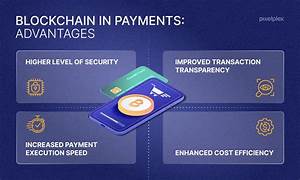What Are the Security Benefits of Blockchain in Payments?
The financial landscape is undergoing a profound transformation, and blockchain technology sits at the heart of this evolution. Designed as a decentralized, secure, and transparent ledger, blockchain is revolutionizing how payments are made, processed, and secured. As traditional payment systems grapple with issues like fraud, high transaction fees, and inefficiencies, blockchain offers a powerful alternative that prioritizes security while maintaining efficiency.
This article explores the security benefits of blockchain in payments, the challenges it addresses, and its potential to redefine trust in the financial ecosystem.
Understanding Blockchain in Payments
Blockchain technology operates on the principles of decentralization, immutability, and transparency. It records transactions across a distributed network of computers, ensuring that data is secure and tamper-proof. In payment systems, blockchain eliminates the need for intermediaries like banks, enabling peer-to-peer transactions while maintaining the highest levels of security.
Key features of blockchain that enhance its security include:
- Cryptographic Encryption: Transactions are protected using advanced cryptographic algorithms, ensuring data integrity.
- Decentralization: No single entity controls the data, reducing the risk of centralized attacks.
- Consensus Mechanisms: Blockchain networks use consensus protocols like Proof of Work (PoW) or Proof of Stake (PoS) to validate transactions.
Security Challenges in Traditional Payment Systems
Traditional payment systems, while widely used, are not without vulnerabilities. Common issues include:
- Fraud and Cyberattacks
Credit card fraud, identity theft, and unauthorized transactions are significant concerns in centralized systems. - Data Breaches
Centralized databases are attractive targets for hackers. High-profile breaches have exposed sensitive customer information, leading to financial and reputational losses. - Intermediary Risks
Payment systems rely on intermediaries to process transactions, creating multiple points of failure. Delays, errors, and miscommunication can compromise security. - High Costs of Security Maintenance
Maintaining robust cybersecurity infrastructure is expensive and often reactive rather than proactive.
Blockchain’s unique architecture addresses these challenges head-on, making it a game-changer in secure payment processing.
Security Benefits of Blockchain in Payments
1. Enhanced Data Protection
Blockchain uses advanced cryptographic techniques to secure data. Each transaction is encrypted and linked to the previous one, creating a tamper-resistant chain.
- Immutable Records: Once a transaction is added to the blockchain, it cannot be altered or deleted, reducing the risk of fraud.
- Data Privacy: Sensitive information is stored securely, often using pseudonyms or private keys, minimizing exposure to unauthorized parties.
For example, in cross-border payments, blockchain ensures that sensitive data, such as account numbers, is not visible to intermediaries, reducing the risk of data breaches.
2. Decentralized Security
Blockchain eliminates the need for a central authority, distributing data across a network of nodes.
- Reduced Single Point of Failure: Unlike centralized systems, a decentralized blockchain network is less vulnerable to cyberattacks.
- Consensus Validation: Transactions are verified by multiple nodes, making it nearly impossible for malicious actors to manipulate the system.
This decentralization is particularly beneficial in preventing Distributed Denial of Service (DDoS) attacks, which often target centralized payment systems.
3. Fraud Prevention
Fraudulent transactions are a major concern in traditional payments. Blockchain’s transparency and immutability address this issue effectively.
- Transparency: All participants in the blockchain network have access to the same transaction data, creating an auditable trail that deters fraud.
- Authentication: Digital signatures and public/private key encryption ensure that only authorized users can initiate transactions.
For instance, smart contracts—self-executing agreements coded into the blockchain—can automatically verify and execute payment terms, eliminating opportunities for manipulation.
4. Secure Peer-to-Peer Transactions
Blockchain enables direct transactions between parties, removing the need for intermediaries.
- Reduced Attack Surface: Fewer intermediaries mean fewer points where data can be intercepted or tampered with.
- Faster Settlement: Transactions are processed in real-time, reducing the risk of errors or unauthorized changes during delays.
This benefit is especially significant for cryptocurrency payments, where users transact directly without relying on third-party services.
5. Protection Against Double Spending
Double spending occurs when the same digital currency is used in multiple transactions. Blockchain prevents this through its consensus mechanisms.
- Real-Time Validation: Transactions are validated by the network before they are confirmed.
- Timestamping: Each transaction is timestamped and recorded sequentially, ensuring its uniqueness.
This feature is critical for maintaining trust in digital currencies like Bitcoin, where preventing double spending is paramount.
6. Tamper-Proof Audit Trails
Blockchain provides an immutable record of all transactions, creating a secure audit trail.
- Compliance and Reporting: Businesses can easily demonstrate compliance with financial regulations.
- Accountability: Transparent records make it easier to identify and resolve disputes.
This capability is particularly useful for industries like finance and healthcare, where regulatory compliance is crucial.
7. Global Security Standardization
Blockchain operates on standardized protocols, ensuring consistent security measures across borders.
- Cross-Border Payments: Blockchain’s global infrastructure eliminates inconsistencies in security standards across countries.
- Interoperability: Different systems can interact seamlessly without compromising security.
This standardization enhances trust in international transactions, a critical factor in the globalized economy.
Real-World Applications of Blockchain in Secure Payments
1. Cryptocurrencies
Bitcoin, Ethereum, and other cryptocurrencies are prime examples of secure blockchain-based payment systems.
- Decentralized Architecture: These systems operate without central authorities, reducing risks.
- Transparency: Public ledgers ensure all transactions are visible and traceable.
2. Remittances
Blockchain simplifies cross-border payments by reducing transaction times and costs.
- Use Case: Companies like Ripple use blockchain to enable fast and secure international money transfers.
3. Retail and E-Commerce
Blockchain enhances security in online payments, protecting both merchants and consumers.
- Use Case: Platforms like BitPay facilitate secure cryptocurrency payments for online retailers.
4. Banking and Finance
Financial institutions are adopting blockchain to secure payment processing and settlements.
- Use Case: JPMorgan’s blockchain-based platform, Onyx, provides secure payment solutions for institutional clients.
Challenges in Implementing Blockchain for Payments
While blockchain offers significant security benefits, its adoption is not without challenges:
- Scalability
Blockchain networks can struggle to handle high transaction volumes, leading to delays and increased costs. - Energy Consumption
Consensus mechanisms like Proof of Work require substantial computational power, raising environmental concerns. - Regulatory Uncertainty
Different countries have varying regulations regarding blockchain and cryptocurrencies, complicating adoption. - Integration Complexity
Integrating blockchain with existing payment systems requires significant investment and expertise. - User Adoption
Consumers and businesses may be hesitant to adopt blockchain-based systems due to unfamiliarity or misconceptions.
The Future of Blockchain in Secure Payments
The future of blockchain in payments is promising, with ongoing advancements aimed at overcoming current limitations:
- Scalability Solutions: Technologies like Layer 2 solutions and Proof of Stake aim to improve transaction speed and efficiency.
- Eco-Friendly Protocols: New consensus mechanisms are being developed to reduce energy consumption.
- Global Collaboration: International organizations are working to establish standardized regulations for blockchain technology.
As these developments unfold, blockchain’s role in secure payments will continue to grow, reshaping the financial landscape.
Conclusion
Blockchain technology represents a paradigm shift in how payments are processed and secured. Its decentralized, transparent, and tamper-proof architecture addresses many of the vulnerabilities inherent in traditional payment systems.
From enhanced data protection and fraud prevention to secure peer-to-peer transactions and tamper-proof audit trails, blockchain offers a robust solution to the security challenges of modern payments. While challenges remain, ongoing innovations and increasing adoption signal a future where blockchain becomes a cornerstone of secure financial transactions.
In a world increasingly reliant on digital payments, blockchain stands as a beacon of security, trust, and efficiency.


